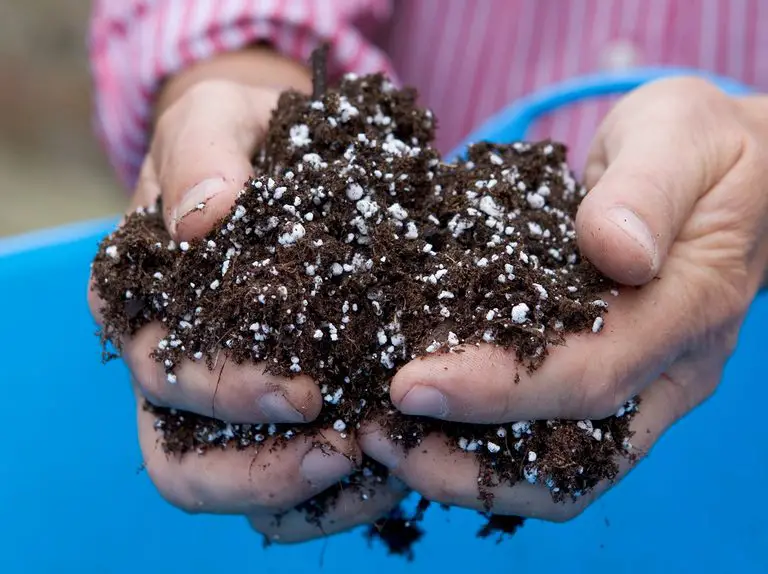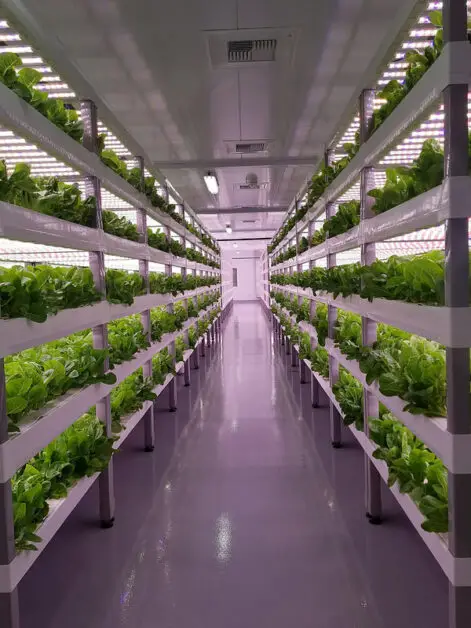Super Growing Napa Cabbage in Your Beds
Table of Contents
Preparing Your Garden Beds for Napa Cabbage: Tips on soil preparation, including soil pH, nutrient levels, and organic matter.
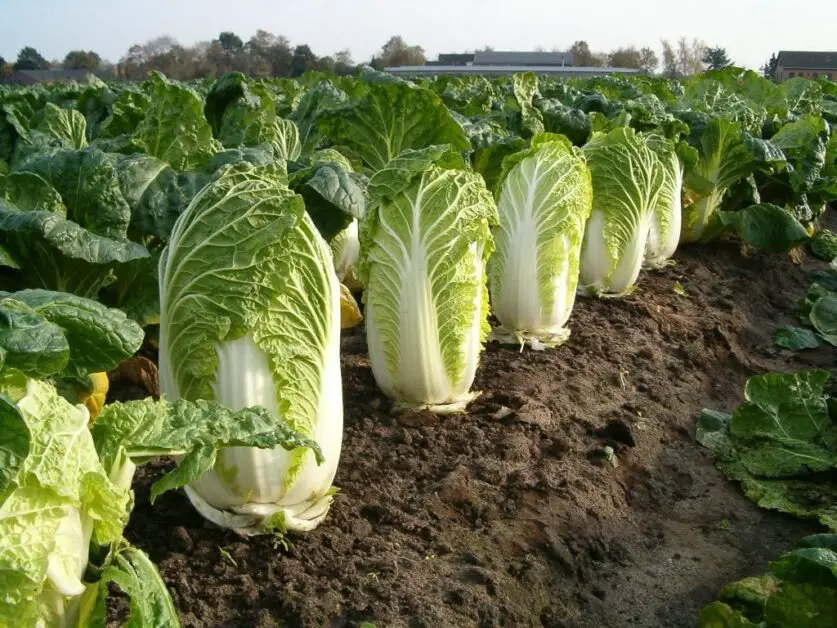
Soil preparation is a crucial step in ensuring the health and productivity of your Napa cabbage plants. Before you begin planting, it’s important to assess the quality of your garden beds and make necessary adjustments to create an optimal growing environment.
One key factor to consider is the soil pH. Napa cabbage thrives in slightly acidic soil with a pH level between 6.0 and 6.8. Testing the pH of your soil will help determine if any adjustments are needed. If the pH level is too high, you can lower it by adding organic matter such as compost or well-rotted manure. On the other hand, if the pH is too low, the addition of lime can help raise it to the desired range.
In addition to pH, ensuring proper nutrient levels is vital for the success of your Napa cabbage crop. Conducting a soil test will give you valuable insights into the nutrient content of your garden beds. Nitrogen, phosphorus, and potassium are the primary macronutrients that Napa cabbage requires for healthy growth. Organic fertilizers, such as compost or well-decomposed organic matter, can provide a slow release of these nutrients. Alternatively, you can opt for synthetic fertilizers that are specifically formulated for cabbage plants. Balancing these nutrients according to your soil test results will help optimize the growth and productivity of your Napa cabbage.
Starting Napa Cabbage Seeds Indoors: A step-by-step guide on starting cabbage seeds indoors for transplanting to your beds.
Starting Napa cabbage seeds indoors is a crucial first step in cultivating healthy and robust plants for transplanting to your garden beds. By starting the seeds indoors, you can gain better control over the growing conditions and ensure successful germination. Here is a step-by-step guide to help you get started:
1. Selecting the right containers: Choose trays or pots that have drainage holes to avoid waterlogging. Ensure they are clean and sterilized to prevent the growth of pathogens.
2. Preparing the seedling mix: Use a well-draining seedling mix or create your own by combining peat moss, vermiculite, and perlite. This will provide a lightweight and nutrient-rich medium for the seeds to germinate.
3. Sowing the seeds: Place the seeds on the surface of the seedling mix, spacing them evenly. Lightly press them into the soil, making sure they are not buried too deep.
4. Providing optimal conditions: Napa cabbage seeds require consistent warmth and moisture for germination. Cover the seed trays with a plastic dome or plastic wrap to create a greenhouse-like environment, retaining heat and moisture. Place the trays in a warm location, maintaining a temperature of around 70-75°F (21-24°C).
5. Ensuring adequate light: Once the seeds germinate and sprout, remove the plastic covering and place the trays near a south-facing window or under grow lights. Napa cabbage requires at least 12-14 hours of bright, indirect light daily to develop strong and healthy seedlings.
By following these steps, you can ensure the successful germination of your Napa cabbage seeds indoors. Next, let’s explore how to transplant these seedlings to your prepared garden beds, where they can thrive and produce a bountiful harvest.
Transplanting Napa Cabbage Seedlings: Best practices for transplanting your cabbage seedlings from indoor containers to your prepared beds.
When it comes to transplanting Napa cabbage seedlings, following best practices is essential for ensuring their successful growth and development. Before moving your seedlings from indoor containers to your prepared garden beds, there are a few key steps you should take.
First, it’s important to harden off your Napa cabbage seedlings. This process gradually exposes them to the outdoor environment, helping them acclimate to the changes in temperature, sunlight, and wind. Start by placing your seedlings outside in a sheltered location for a few hours each day, gradually increasing their exposure over the course of a week. This will help prevent transplant shock and improve their chances of survival in the garden.
Once your seedlings are hardened off, choose a suitable location in your garden bed. Napa cabbage prefers well-draining soil with a slightly acidic pH of around 6.0 to 6.5. Make sure the area receives at least six hours of direct sunlight per day. Prior to transplanting, prepare the soil by loosening it with a garden fork or tiller and removing any weeds or debris.
Proper Spacing and Thinning: Guidelines on spacing and thinning cabbage plants to promote healthy growth and maximize yield.
Spacing and thinning are crucial steps in the growth of Napa cabbage plants as they help promote healthy growth and maximize yield. When it comes to spacing, each Napa cabbage plant requires adequate room to develop their leaves and heads. It is recommended to allow at least 18-24 inches (45-60 cm) between each plant to ensure proper air circulation and prevent overcrowding. This spacing also facilitates access for maintenance tasks such as watering, weeding, and pest inspection.
Thinning is equally important to ensure the best possible growth for your Napa cabbage plants. Thin out the seedlings once they have developed their first true leaves and are approximately 3-4 inches (7-10 cm) tall. The purpose of thinning is to remove excess seedlings, creating ample space for the remaining plants to grow without competition. Aim for a final spacing of 12-18 inches (30-45 cm) between each healthy and vigorous seedling. By eliminating weaker or overcrowded plants, you allow the remaining ones to access more nutrients, light, and water, resulting in stronger and healthier Napa cabbage heads.
Watering and Irrigation: Understanding the water requirements of cabbage and implementing proper irrigation techniques for optimal growth.
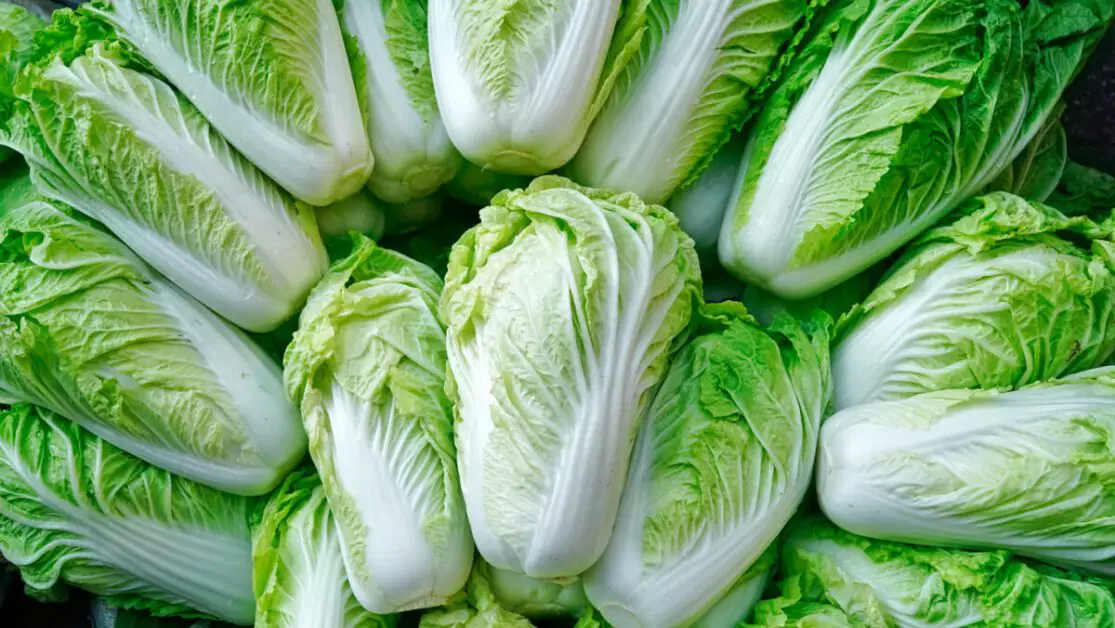
One of the key factors in ensuring the successful growth of Napa cabbage is providing adequate water and irrigation. Understanding the water requirements of this leafy vegetable and implementing proper irrigation techniques are crucial for optimal growth and yield. Napa cabbage is a cool-season crop that requires consistent moisture, but it is also sensitive to overwatering. Therefore, striking the right balance is essential.
Napa cabbage prefers a consistently moist soil, but not waterlogged conditions. Overwatering can lead to root rot and other diseases. On the other hand, underwatering can result in stunted growth and reduced quality. The frequency and amount of water needed will depend on factors such as the climate, soil type, and stage of growth. As a general guideline, Napa cabbage typically requires about 1 inch of water per week, either from rainfall or supplemental irrigation. It is crucial to monitor soil moisture levels regularly, as this will help determine when and how much water is needed. To assess moisture levels, you can use a moisture meter or simply feel the soil with your fingers.
Fertilizing Cabbage: A comprehensive overview of fertilization needs for Napa cabbage, including organic and synthetic options.
To ensure healthy growth and maximize the yield of your Napa cabbage, proper fertilization is essential. Napa cabbage is a nutrient-hungry plant that thrives when provided with a balanced supply of essential elements. When it comes to fertilizing Napa cabbage, you have a range of options available, including both organic and synthetic fertilizers.
Organic fertilizers offer a natural and sustainable approach to nourishing your Napa cabbage plants. Composed of decomposed plant or animal matter, organic fertilizers release nutrients slowly over time, providing a steady supply of nutrition. Common examples of organic fertilizers include compost, well-rotted manure, bone meal, and fish emulsion. These options not only supply necessary nutrients but also improve soil structure and increase its water-holding capacity.
On the other hand, synthetic fertilizers are artificially manufactured and typically provide a quick and readily available source of nutrients. They come in granular, liquid, or soluble forms and contain specific nutrient ratios. Synthetic fertilizers, such as those labeled with NPK (nitrogen, phosphorus, potassium) ratios, can deliver precise and targeted nutrition. However, it is crucial to follow package instructions carefully to avoid over-application, which can result in nutrient imbalances or environmental harm.
Regardless of the type of fertilizer you choose for your Napa cabbage, it is essential to conduct a soil test to determine its nutrient status. This will help you understand which nutrients may be lacking and enable you to tailor your fertilizer application accordingly. Additionally, remember to apply fertilizers at the right time, following the recommended application rates, and consider supplementing fertilization with regular watering and proper crop rotation practices. By meeting the fertilization needs of your Napa cabbage, you will create an environment conducive to healthy growth and bountiful harvests.
Fertilizing Napa cabbage is essential to ensure healthy growth and optimal yield. Here are some general guidelines for fertilizing cabbage:
- Soil Testing: Before planting, conduct a soil test to determine its nutrient levels. This will help you understand what nutrients are lacking and how to amend the soil accordingly.
- Organic Matter: Prior to planting, incorporate well-rotted compost or aged manure into the soil. This helps improve soil structure, fertility, and moisture retention.
- Nitrogen: Napa cabbage requires a significant amount of nitrogen for leafy growth. Apply a balanced fertilizer with a higher nitrogen content, such as a 10-10-10 formula, according to the manufacturer’s instructions. Side-dress the plants with nitrogen-rich fertilizer when they are about halfway through their growth cycle.
- Phosphorus and Potassium: Ensure that the soil has an adequate supply of phosphorus and potassium, which are important for root development and overall plant health. A balanced fertilizer will typically contain these nutrients as well.
- Micronutrients: Napa cabbage may benefit from micronutrients such as boron, manganese, and zinc. If your soil test indicates deficiencies in these nutrients, consider supplementing with micronutrient-rich fertilizers or organic amendments.
- Application Frequency: Fertilize Napa cabbage throughout the growing season, following the recommended application rates and schedules on the fertilizer packaging. Avoid over-fertilizing, as this can lead to nutrient imbalances and environmental pollution.
- Watering: After fertilizing, ensure adequate irrigation to help the plants absorb nutrients effectively. Consistent moisture levels are crucial for healthy growth and nutrient uptake.
- Mulching: Mulching around Napa cabbage plants can help conserve soil moisture and reduce weed competition. Organic mulches such as straw or shredded leaves also contribute to soil fertility as they decompose.
- Foliar Feeding: In addition to soil applications, foliar feeding with a water-soluble fertilizer can provide a quick nutrient boost to Napa cabbage plants. Use a balanced fertilizer and apply it according to the manufacturer’s instructions, preferably in the morning or evening when temperatures are cooler.
By following these fertilization practices, you can promote vigorous growth and high-quality yields of Napa cabbage. Adjust fertilization strategies based on specific soil conditions, plant responses, and environmental factors for optimal results.
here’s a simple table about Cabbage:
| Attribute | Description |
|---|---|
| Scientific Name | Brassica rapa subsp. pekinensis |
| Common Name(s) | Napa cabbage, Chinese cabbage, celery cabbage |
| Family | Brassicaceae |
| Origin | China |
| Appearance | Long, oblong-shaped leaves with thick, white stems and crinkly, light-green leaves |
| Taste | Mild, slightly sweet |
| Nutritional Content | High in vitamin C, vitamin K, folate, and fiber |
| Culinary Uses | Commonly used in stir-fries, soups, salads, kimchi, and pickling |
| Storage | Refrigerate in a plastic bag for up to 1-2 weeks |
| Cooking Tips | Can be eaten raw or cooked; cooking methods include steaming, stir-frying, and boiling |
| Availability | Year-round availability in most markets |
This table provides basic information about Napa cabbage, including its scientific name, common names, origin, appearance, taste, nutritional content, culinary uses, storage tips, cooking tips, and availability.
Managing Pests and Diseases: Identifying common pests and diseases that affect Napa cabbage and implementing effective prevention
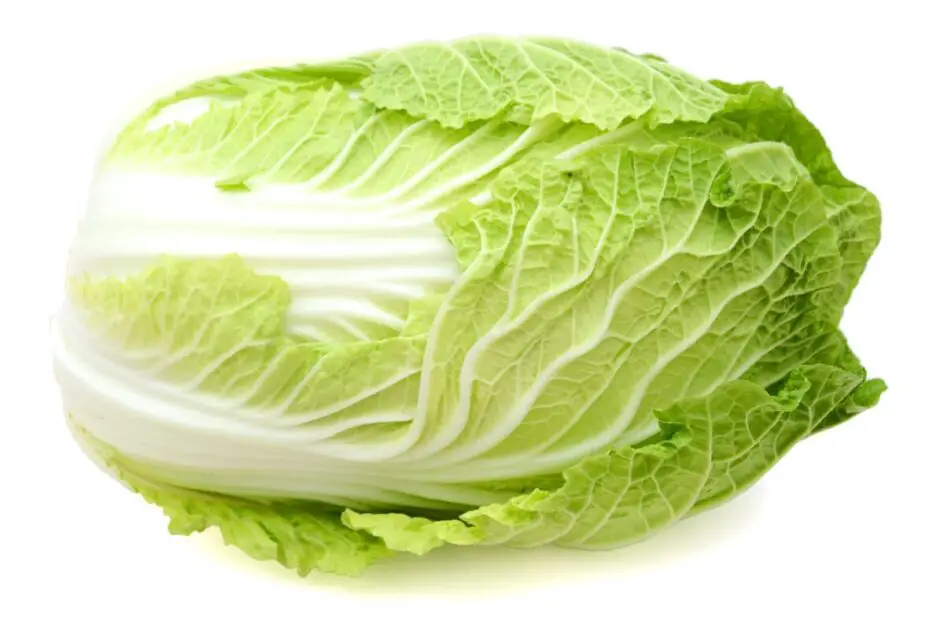
Napa cabbage is a nutritious and delicious vegetable that is unfortunately prone to various pests and diseases. Proper identification and prevention of these issues is crucial for successful cultivation. One common pest that can wreak havoc on Napa cabbage plants is the cabbage root fly. The larvae of this fly feed on the roots, causing stunted growth and wilting. To prevent infestations, it is important to keep the garden area clean and free of debris, as flies are attracted to decaying organic matter. Additionally, using protective covers, such as row covers or insect nets, can help to physically block the flies from reaching the plants.
Another pest that poses a threat to Napa cabbage is the cabbage looper. These green caterpillars can quickly defoliate plants, leading to reduced yields. To minimize their damage, regular inspection and manual removal of caterpillars is recommended. Additionally, introducing natural predators such as parasitic wasps can help to control the looper population. It is also important to practice crop rotation, as looper eggs can overwinter in the soil and emerge as destructive pests in subsequent seasons.
When it comes to diseases, one of the most common problems Napa cabbage faces is clubroot. This soil-borne disease causes root deformation and stunted growth, ultimately leading to plant death. To prevent clubroot, it is crucial to maintain proper soil pH. Napa cabbage prefers slightly acidic soil with a pH between 6.0 and 6.5. Additionally, practicing good crop rotation and avoiding planting brassicas in the same area for consecutive years can help break the disease cycle. If clubroot is already present in the soil, consider incorporating organic matter, such as compost, to improve soil structure and drainage, as well as applying lime to raise the pH level.
In conclusion, being proactive with pest and disease prevention is essential for successful Napa cabbage cultivation. By implementing preventive measures against common pests like cabbage root flies and cabbage loopers, and taking steps to prevent diseases like clubroot, gardeners can ensure healthy and abundant harvests of this versatile vegetable. Stay tuned for more tips and techniques on managing and maintaining your Napa cabbage plants.
What are some common pests that affect Napa cabbage?
Some common pests that affect Napa cabbage include aphids, cabbage worms, flea beetles, and slugs.
How can I identify aphids on my Napa cabbage plants?
Aphids are small, soft-bodied insects that can be green, black, brown, or red. They tend to cluster on the undersides of leaves and can cause curling or yellowing of the foliage.
What is the best way to prevent cabbage worms from damaging my Napa cabbage?
To prevent cabbage worms, you can use floating row covers to physically block the adult butterflies from laying eggs on your plants. Additionally, you can apply organic insecticides such as Bacillus thuringiensis (Bt) to control the larvae.
How do I identify flea beetle damage on my Napa cabbage?
Flea beetles create small, round holes in the leaves of Napa cabbage. These holes can eventually cause the leaves to turn yellow and become stunted.
What can I do to prevent slug infestation in my Napa cabbage garden?
To prevent slug infestation, you can remove any debris or hiding places near your plants, such as boards or rocks. You can also create barriers, like copper tape or diatomaceous earth, around the base of your plants to deter slugs.
What are some common diseases that can affect Napa cabbage?
Common diseases that can affect Napa cabbage include clubroot, black rot, and downy mildew.
How can I identify clubroot in my Napa cabbage plants?
Clubroot causes the roots of Napa cabbage plants to become swollen and deformed. The plants may also show stunted growth and yellowing of the leaves.
What steps can I take to prevent black rot in my Napa cabbage?
To prevent black rot, it is important to practice crop rotation and avoid planting Napa cabbage in the same area for several years. Additionally, you should remove and destroy any infected plants to prevent the spread of the disease.
How do I identify downy mildew on my Napa cabbage?
Downy mildew appears as yellow or white patches on the upper surface of Napa cabbage leaves. The underside of the leaves may have a fuzzy, grayish growth.
What can I do to prevent downy mildew in my Napa cabbage garden?
To prevent downy mildew, it is important to provide proper air circulation and avoid overhead watering. You can also apply fungicides labeled for downy mildew control, following the instructions carefully.



